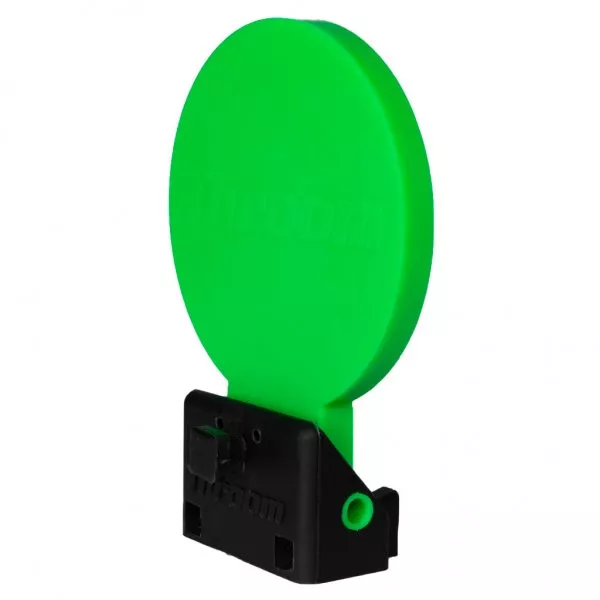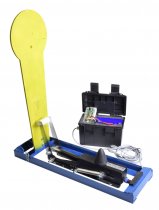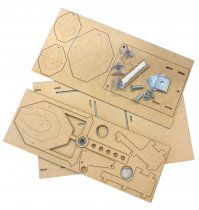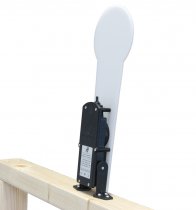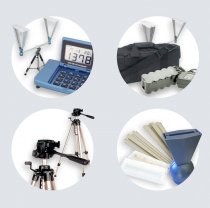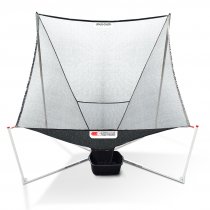FAQ
Rifle 6.5x55mm video tutorials
223/5.56 Setup Information
Collator
The bullet collator should be hung from the reloading press casefeeder tub so that its baseplate sits level side to side, and raised up to a 45 degree pitch angle from back to front (Fig A). Some users have made custom mounts for their collators and that’s fine… just keep the base level from side to side and the pitch angle at 45 degrees.

The nose guide, plastic inserts and flip ramp will need to be adjusted for the particular type of bullet you will be reloading. The nose guide has a narrow lead-in slot (Fig B) which is used to direct the narrow tips of point-down bullets outwards and cause them drop into the large slot and then begin to be rotated towards the ramp and flipped over to point-up orientation. Bases of point-up projectiles will simply slide over the narrow lead-in slot. We suggest adjusting the nose guide position so as to expose enough of a surface to fill half of the collator plate slot when viewed from above (Fig C). This relatively large exposed surface (or ledge) will allow the bases of point up bullets to reliably transit across the nose guide and towards the output tube while still allowing the tips of the bullets to fall into the lead-in slot.


Adjusting the depth of the main slot is accomplished by using different combinations of plastic inserts. Your unit will come with 4 inserts… (2) 1.6mm thick and (2) 0.8 mm thick. When processing rifle bullets you will most likely use only one insert for shorter bullets (i.e. 55gr), or no inserts at all when using longer bullets (Fig D). The longer the bullet, the deeper the slot needs to be. (You’re most likely to use multiple inserts when reloading shorter handgun bullets.) The flip ramp should be adjusted outward enough so that approximately the outer 1/3 of the bullet can ride up the ramp as it’s flipped over to point-up orientation. The ramp may also be adjusted slightly side to side as well. For some bullets (especially longer ones), the flip ramp will work better when moved sideways towards the output tube. This will create a space between the end of the nose guide and the beginning of the flip ramp. Longer bullets will be able to slide outward in this space and assume a more horizontal orientation as they approach the flip ramp.

Dropper Tube
The 223/5.56 dropper tube is similar to the handgun caliber droppers in that there are 2 levels of ball bearings available for accommodating different length bullets. The hole and clip positions are also similar to the handgun versions. The upper clip position is used when the ball bearings are positioned in the upper holes and the lower clip position is used along with the bearings in the lower holes.
Generally, the lower bearing hole/clip position will be used for typical length 55 gr bullets. Longer, heavier bullets will exhibit better tamping performance in the dropper tube when the upper bearing hole/clip position is used. This is because they will fall a greater distance to the case mouth. Greater falling distance means greater acceleration due to gravity, and therefore more tamping force is available to tamp the bullet into the case mouth.
The most accurate way to determine which holes to use is by performing a simple visual check. Properly prepare a case and insert a bullet into the case mouth by hand. What you’re trying to do is simulate a bullet having been dropped into the case mouth by the dropper tube. It should sit in the case mouth and stay in position. Now, with the dropper tube disassembled, insert this case+bullet into the dropper tube and visually check which set of holes best aligns with the tip of the bullet. Remember that since the cases will always enter the dropper tube for a fixed distance and stop, different length bullets will appear at different positions within the tube. If you look at Fig E, it’s obvious that the short projectile is nowhere near extending up to the end of the upper holes, therefore you should be using the lower holes and clip position. In Fig F, you can see that a longer bullet extends up enough to reach the far edge of the upper holes, so the best dropper performance would be obtained by using the upper holes and clip position. Ideally, what you’re trying to do is determine the array of holes that will in the best position to allow the ball bearings to re-enter the dropper bore just below the base of the next bullet in the column.


The dropper tube and threaded die are made from hard anodized aluminum and should need no lubrication. If you choose to apply any lubricant, please do so sparingly and we would suggest a dry, Teflon based spray vs a liquid base lube. When disassembling the dropper, be careful not to lose the ball bearings. It’s a good idea to do any disassembly over a large bowl or pan with a paper towel at the bottom. That way, if the bearings slip from your fingers, they will fall into the bowl or pan (a few spare bearings are included with your unit).
Mounting and adjusting the dropper height
Do not mount the dropper at this time.
First… properly prepare a case and position it in the shellplate underneath where you will mount the dropper tube (this is generally the station immediately following the powder measure).
Depending upon the press you’re using… operate the handle to either raise the shellplate or lower the tool head. The case mouth will be approximately even with the top of the tool head.
Now, position the dropper above the station and while holding the inner tube from turning, begin to thread the die into the station for only 1 or 2 turns… just enough to allow it to remain in place. Then begin filling the dropper tube with bullets by hand until you can see them in the clear tube. Continue until the dropper micro-switch arm moves outward and remains in that position. The dropper tube should now be full.
Begin to slowly screw the threaded die more deeply into the tool head. The threaded die, inner drop tube and column of projectiles will all move downward together until the empty case mouth below contacts the inner bore of the dropper tube. At that point the inner tube and column of projectiles will stop moving downward, but you will still be able to continue threading the die downward slowly. After a few more turns you will see the column of projectiles suddenly drop down, tamping the lower one into the case mouth. From the point that the column fell, turn ¼ turn more and then lightly secure the lock nut. Remember… the threaded die is aluminum. Do not over tighten it and strip the threads. Very little force is needed and if you wish to make it more secure, use a little light or medium LocTite. The dropper is unlikely to become loose since there is little to force applied to the die in normal operation.
IMPORTANT NOTE
When the dropper is set-up with the ball bearings in the lower holes and clip position, be careful not to adjust the threaded die down any farther than ¼ turn past the point where the bullet column drops. After approximately ¾ more of a turn, the bottom flange of the dropper tube will contact the bottom of the threaded die. Then, any further tightening may damage the dropper tube flange. There is a little more extra room when the upper holes are used, but it’s best to follow the same guidelines… ¼ turn past the point that the bullet column fell should be adequate for proper operation.
As a final check, check that a bullet is dropped correctly. You should see the column of bullets fall just prior to the press handle completing its stroke. When the column of bullets drops… this indicates that the case has lifted the inner drop tube enough far enough to allow the ball bearings to move outwards, out of the dropper tube bore and into a chamber machined inside the threaded die. Once they clear the bore, there is no support for the column of bullets and it falls. The extra ¼ turn of “over-travel” you added when adjusting the threaded die assures that the ball bearings will exit fully from the bore. When the case holding the dropped bullet is withdrawn from the dropper tube, the ball bearings are forced back into the bore of the dropper tube and enter just below the base of the next bullet in the stack… thereby retaining the column of bullets for the next cycle.
The small diameter output tube spring assembly is used with rifle bullets (and some very short handgun 9mm-38cal bullets). On a fixed tool-head press like a Dillon 650, simply route the output tube spring down to the bullet dropper tube and attach its small cap to the top of the dropper. Your spring tube will most likely be more than long enough and might need to be trimmed a bit shorter. Never trim it so short that spring tension is applied to the top of the dropper tube. A small amount of slack in the spring tube is necessary for correct dropper tube operation. If you’re using a moving tool-head press like a Dillon 1050 however, do not trim your spring length. You will need to allow some slack in the spring tube so that when the moving tool-head goes up and down, no upward and/or lateral forces are applied to the bullet dropper. The bullet dropper must be allowed to rise and fall freely when operating on any reloading press.
A simple trick that works well for routing the output tube spring is to use a ½” wide rubber band to lightly secure the output tube spring up near the top of the powder measure reservoir (Fig G). On a 1050 press, route the output tube spring so that when the tool-head is up or down, some small amount of slack remains in the output tube spring in the section held from below the rubber band to the top of the dropper.

Be sure to also check for clearance between the bullet dropper and the powder measure mechanism… no rubbing/binding or interference with the body of the dropper tube or the metal clip.
Connection to collator
In Fig. H, you can see how the extended top funnel portion of the 223 switch section fits into the output tube spring cap. It‘s a close fit, so be careful not to damage the top funnel when assembling the cap to the dropper.

The setscrew is present to secure the cap to the top of the switch section. All that is required is that the setscrew enters the machined groove on the switch section. It will prevent the cap from coming off. Do not tighten the setscrew or you might distort the bore of the switch section and cause bullets to jam.
The power connection is not polarity sensitive. Either wire can connect to either terminal. Only the outer 2 micro-switch terminals are used. The center terminal has been bent over as a reminder to you not to use it. The coiled cord may be stretched a bit if necessary to relieve any significant lateral tension applied to the dropper tube.
Other Important Considerations
1. For consistent dropper operation, TRIM YOUR CASES TO LENGTH. If your cases vary substantially in length, and you initially adjust the dropper using a longer case, the shorter cases may not consistently cause the dropper to release bullets.
2. Use the swage/expander back-up rod. If reloading on a 1050 press, even if you do not swage the primer pockets, use the die that holds the swage back-up rod and adjust the rod as if you were going to swage the cases. Near the top of the .223 rod is an expander portion (approx .226” dia) which improves bullet tamping somewhat. Personally, I’ve found that trimming a small amount of material (.010”-.020”) from the end of the Dillon rod will give just a bit more expansion to the case mouth (you may have to case harden the tip again though). Additionally, some users have reported excellent results by using a Lyman M-Die in the swage position or during separate case preparation operations. (see photos on the next page)
3. In General: For best results reloading rifle bullets on ANY type of press, you will need to provide some amount of case mouth expansion in order to prevent the bullets from falling off of the cases when the press is indexed.
Case preparation for loading .223
When reloading 223 brass, is it always necessary to some case preparation, and most reloaders either have second press or a 2nd tool head set up to do that.
With many .223 bullets, you may experience bullets tipping over, unless you first throat your brass. This is true for all bullet feeders on the mark. This opening of the case mouth cannot be achieved in the powder station as it is with the pistol calibers, as that opening in the case is too small. So it has to be achieved as a preparation stage, before you reload the bullets.
If you are reloading on a 1050, you can use the swage expander rod to open up the brass a little.

Alternatively, you can use a Lyman M-die to flare the brass a little.
Most reloader will choose to trim and flare their cases as a first stage, before proceeding to reload.


.308 Setup Information
Determining which set of holes and clip position to use when loading .308
The .308 droppers provide 3 height options for steel ball bearings in the dropper, and 4 possible positions for the retention clip. This multitude of options is necessary due to the very wide range of bullets used in this caliber. The following pictures and text will help you understand how this works, and how to determine which level of holes and clip position you should use for your bullets.











Determining how to use your .308 collator plate
With the .308 we supply a complex collator plate, which is made of 2 parts. The upper section is about 18mm high, and the lower section attached to it with 3 pins, adds another 12mm to its height.
We ship the units with the spacer plate assembled in the collator as well, but depending on what bullet length you are loading, you may want to remove it first.
Simply turn the collator upside down and shake it to get the plates to fall out. Take care not to loose the nose guide spacers which may fall out as well. Then remove the lower spacer. The pins will remain in the spacer and should not fall out.
When placing the upper plate back in the collator, take care to move the dislodge arm out of the way as you place the plate back on the motor drive shaft.




.png)






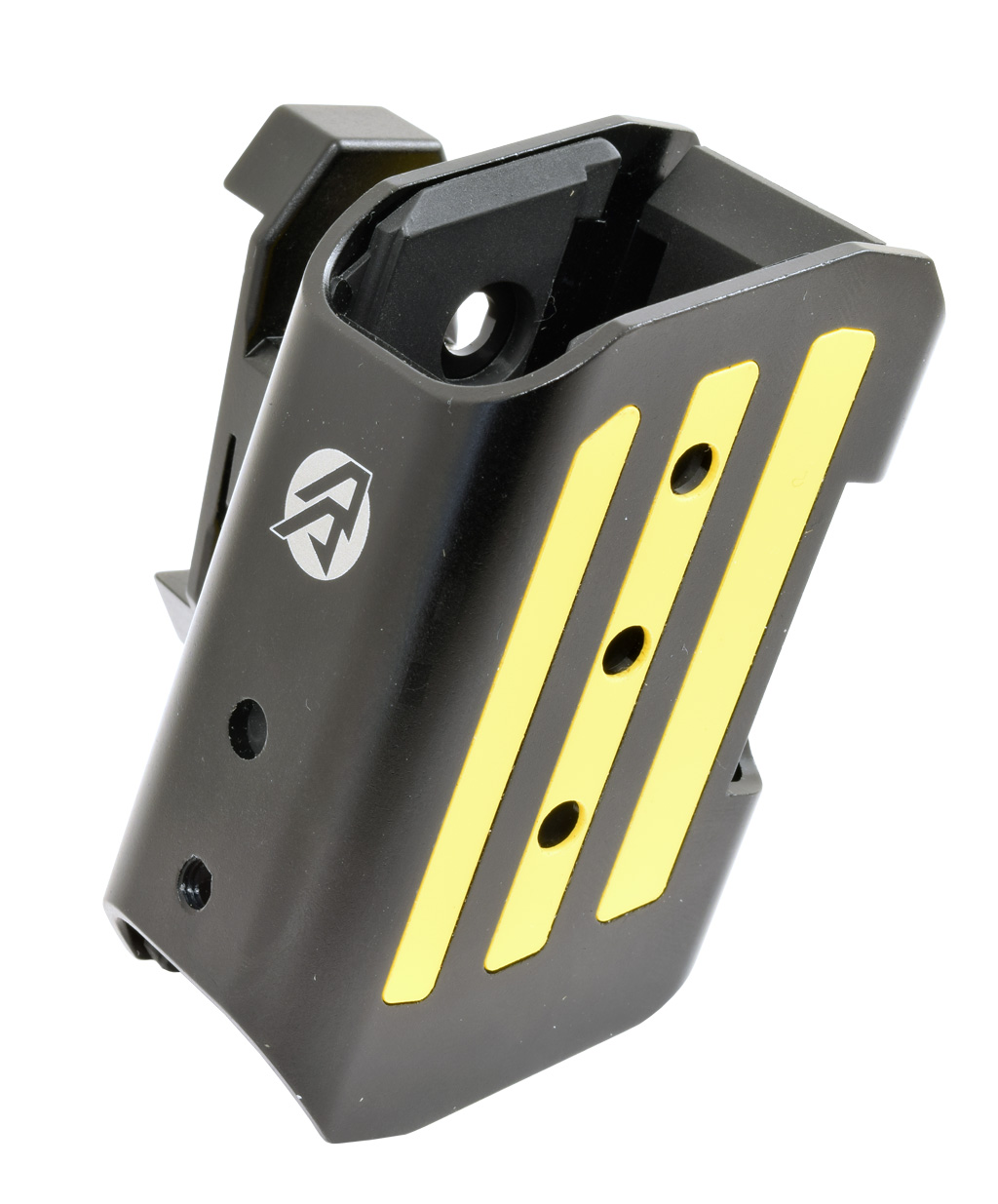
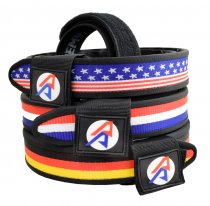
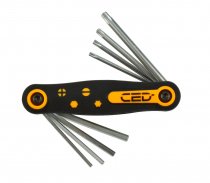
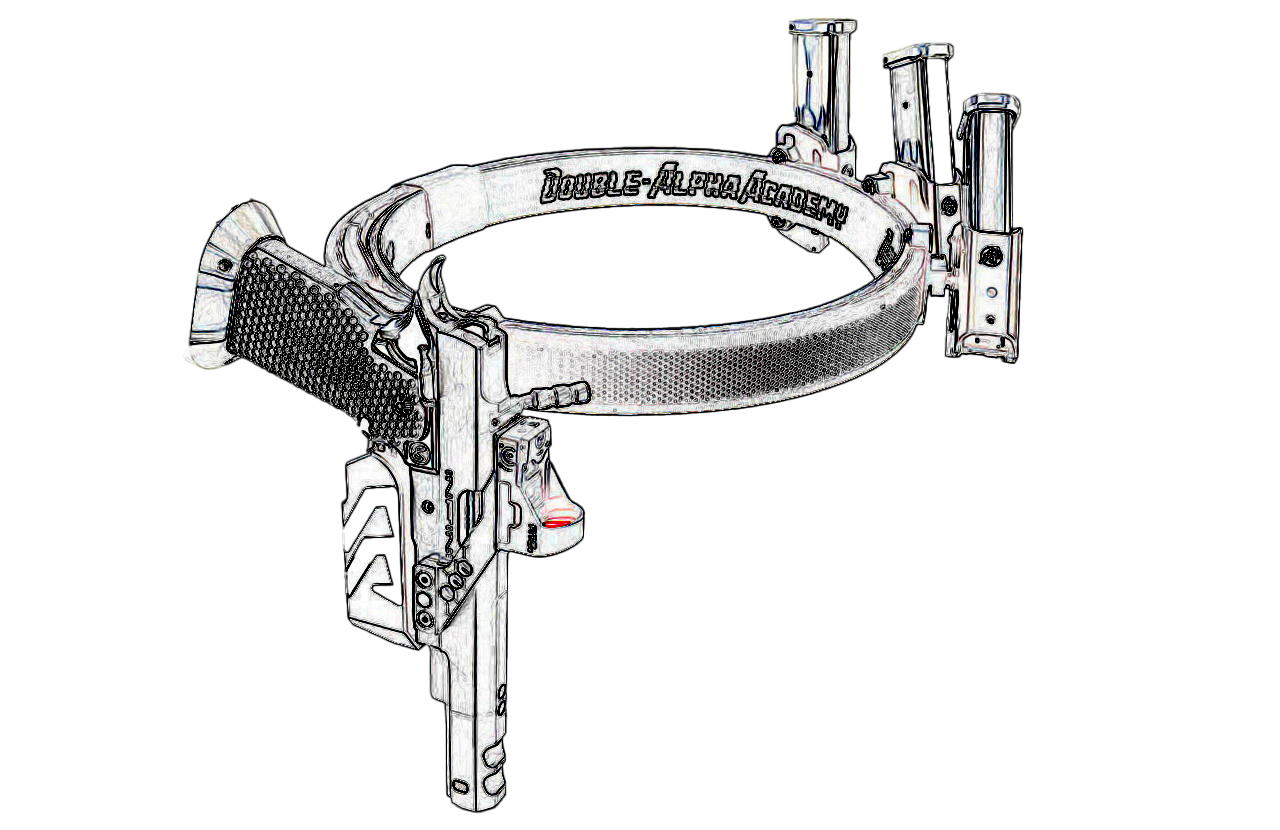


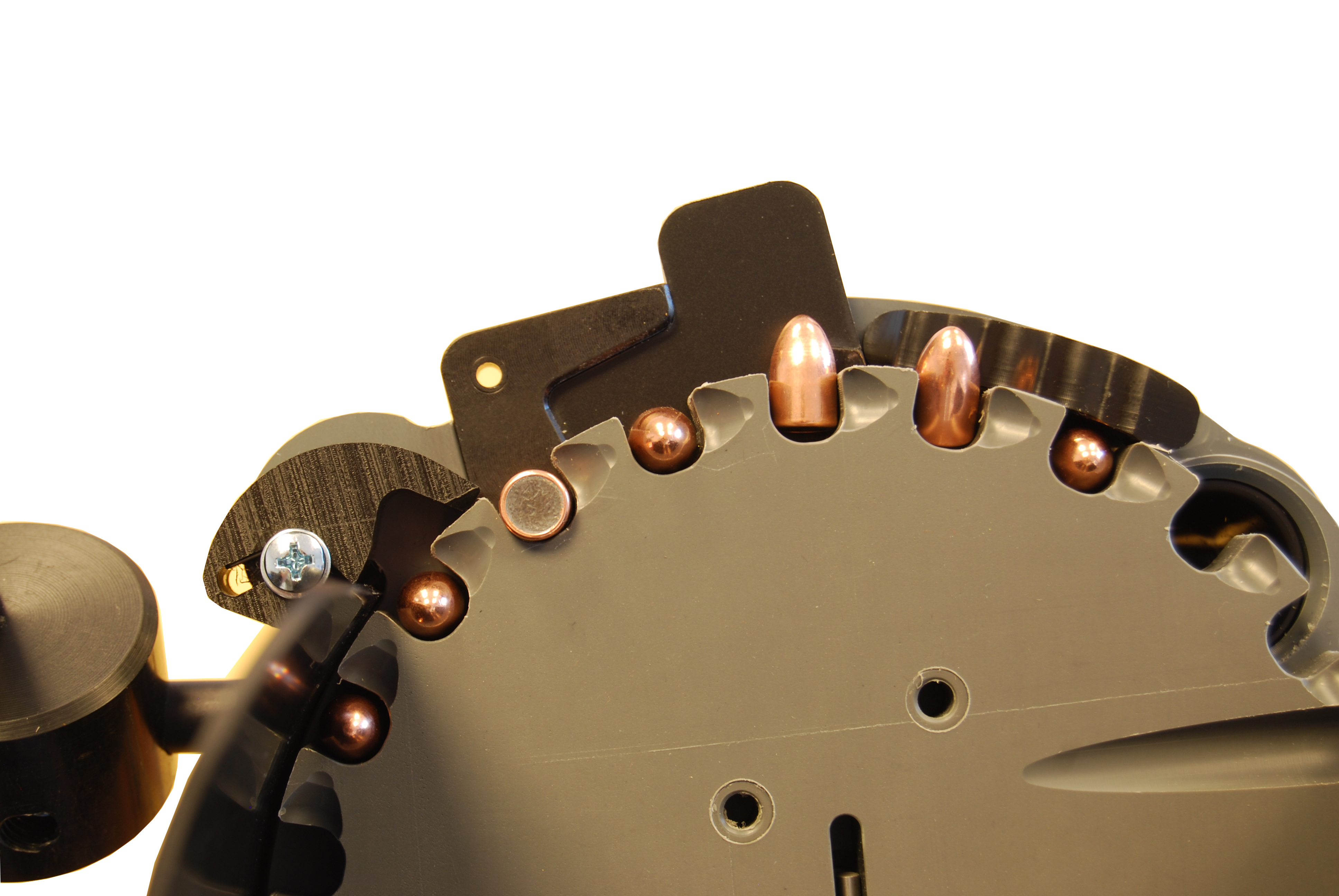
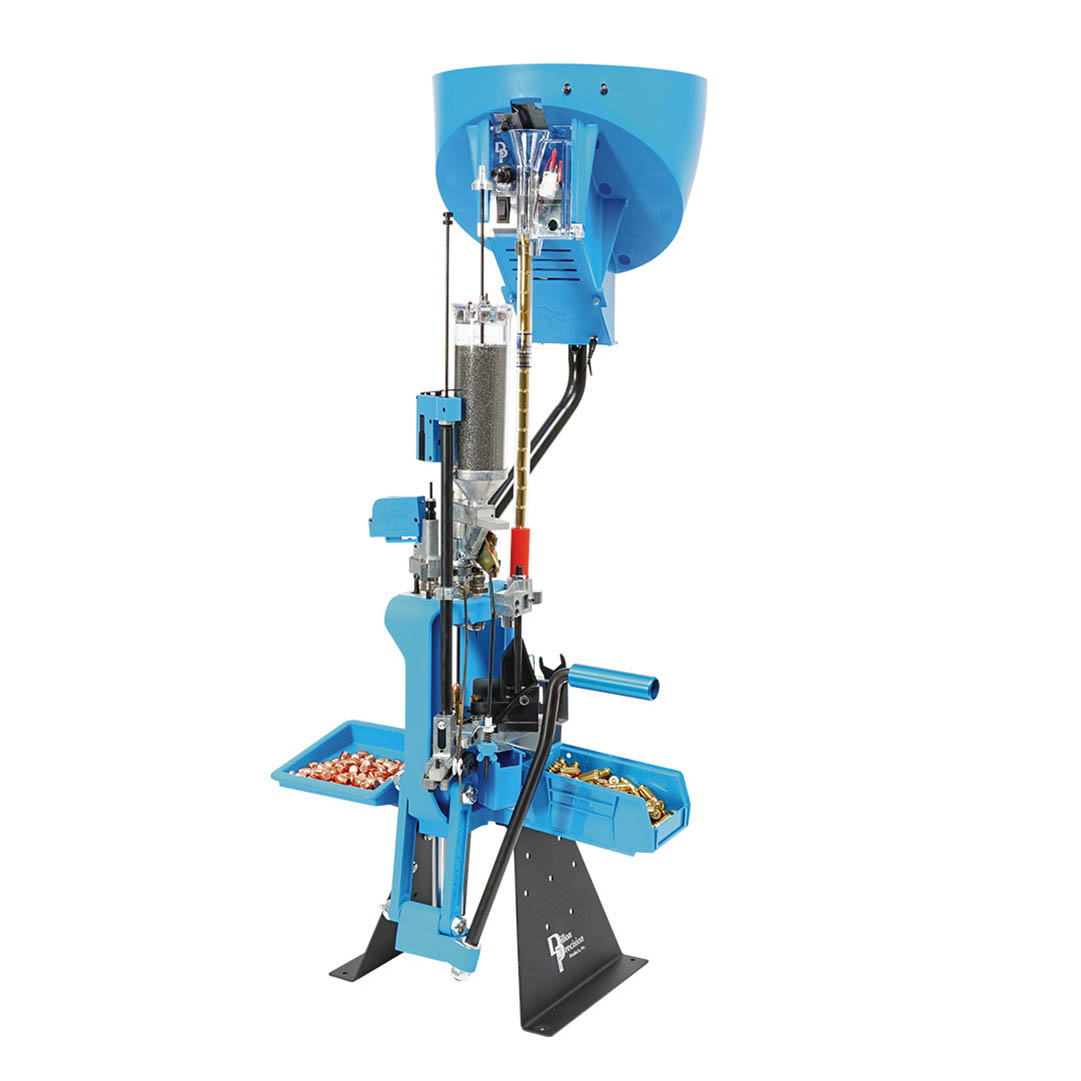


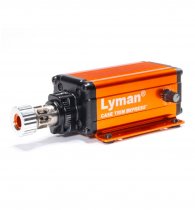
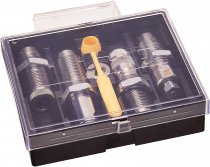

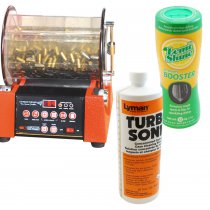
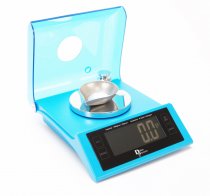
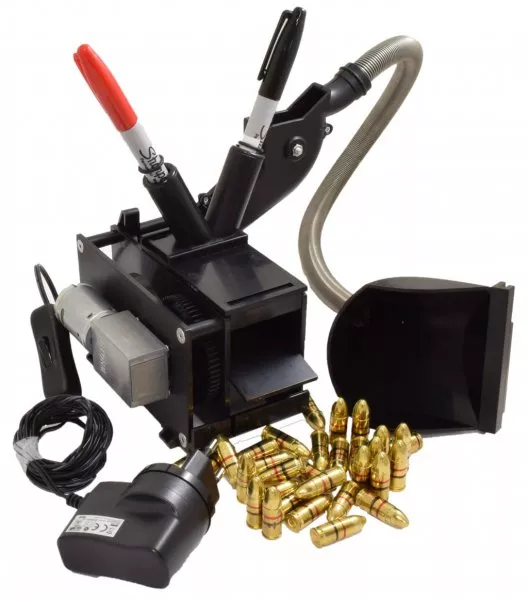

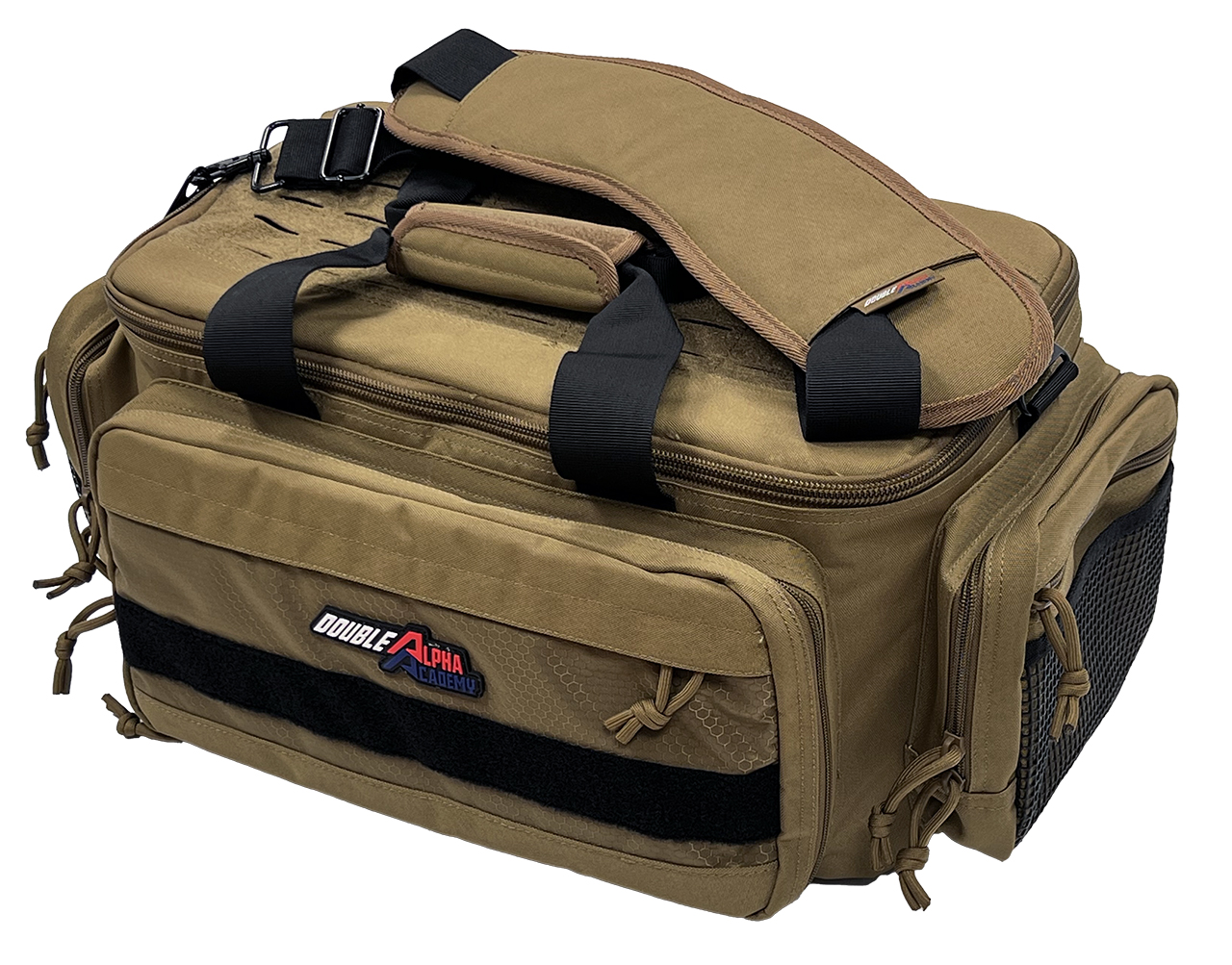
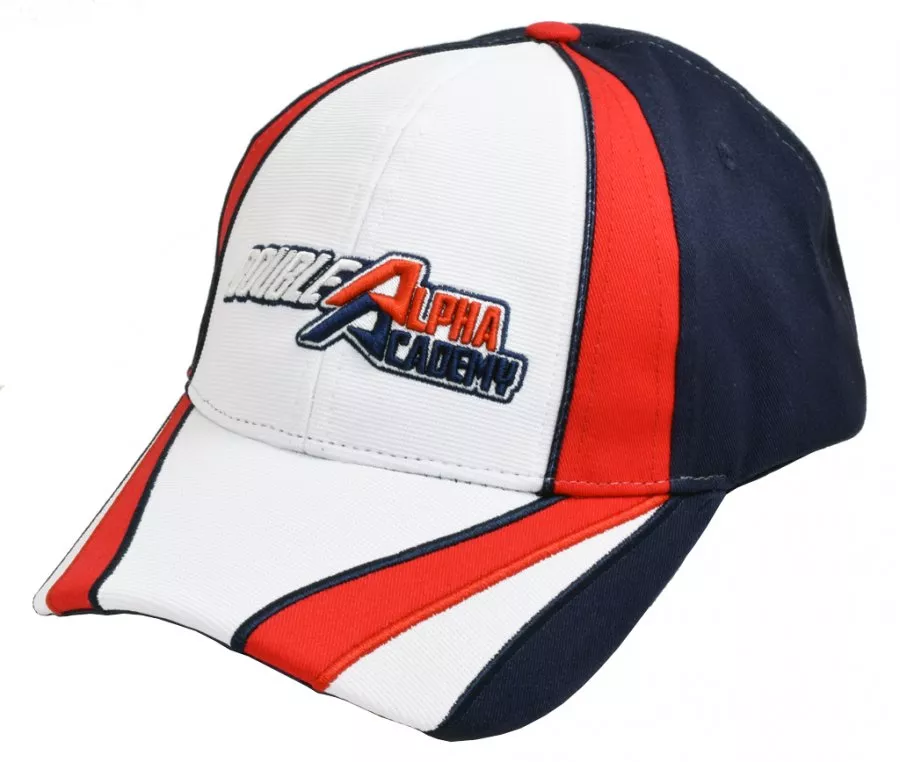


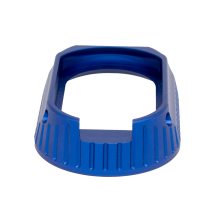
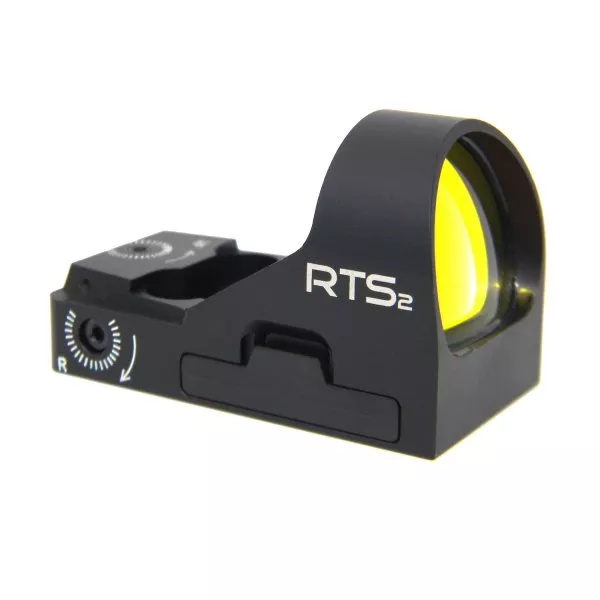
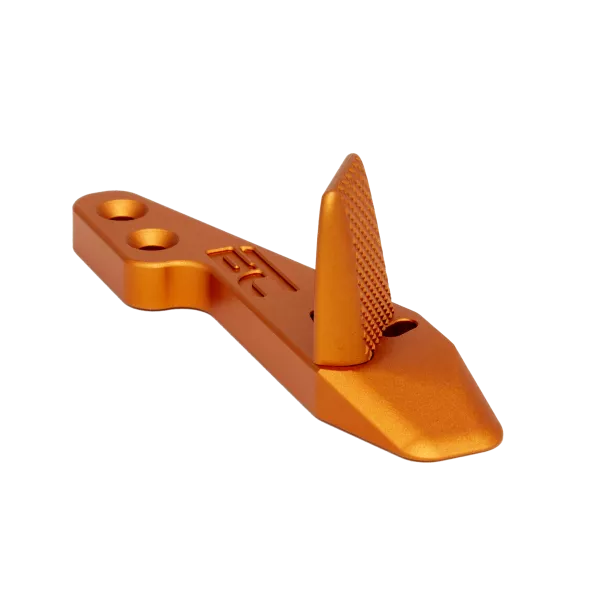
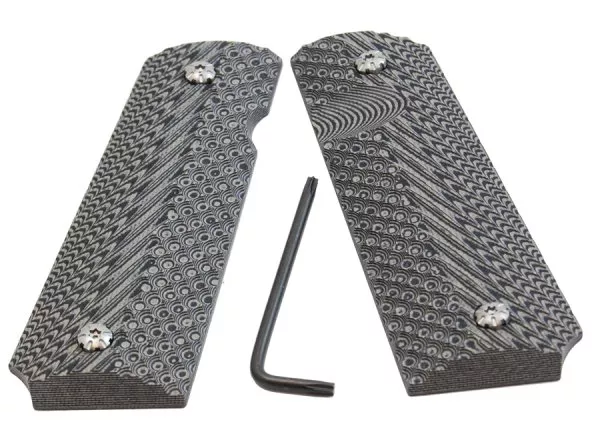
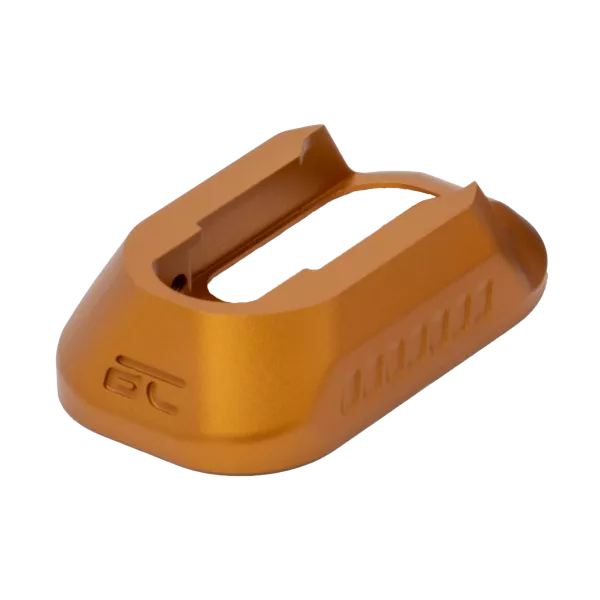
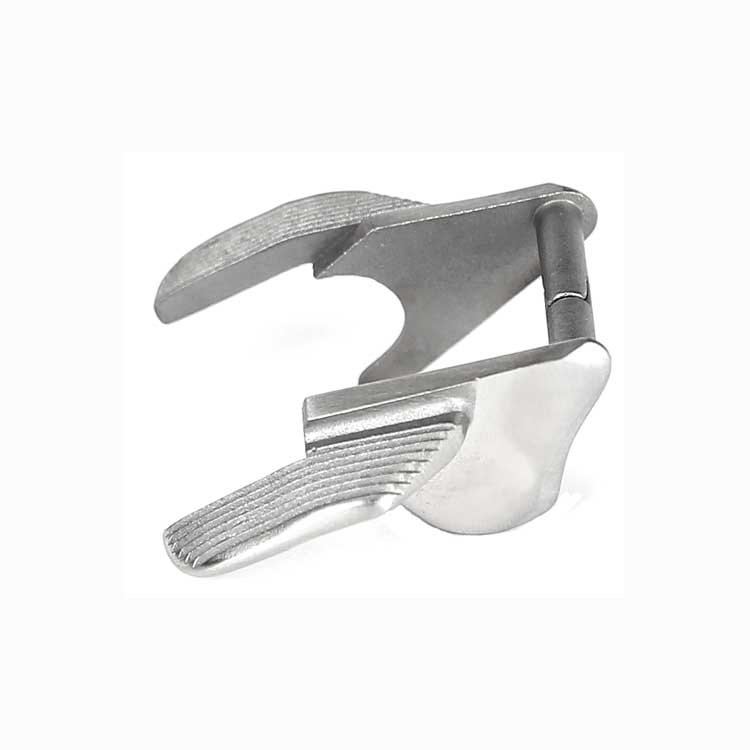
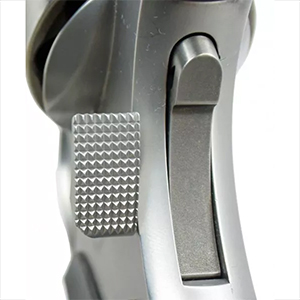
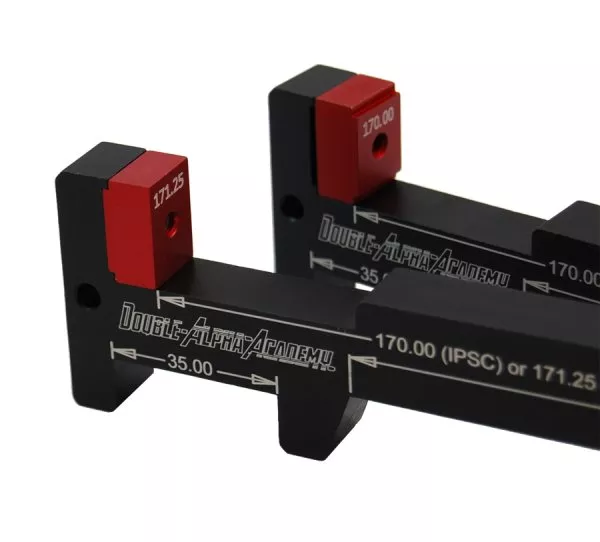
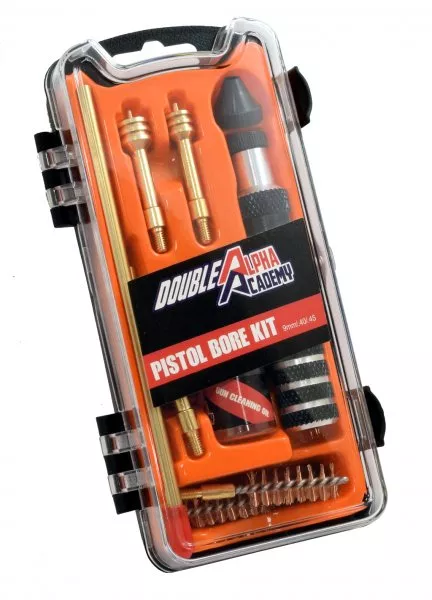

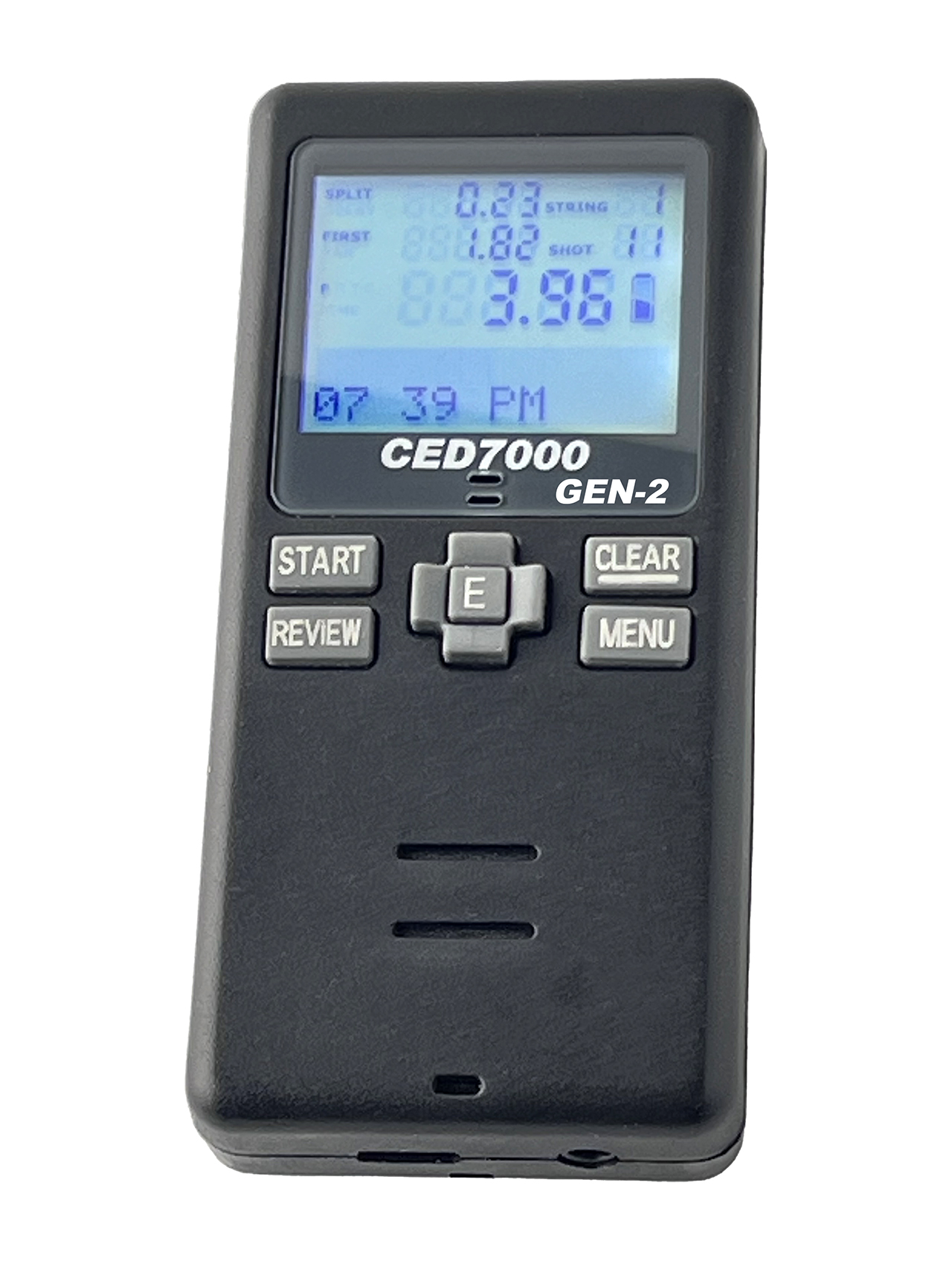


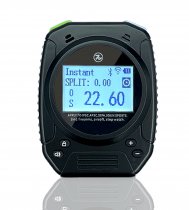
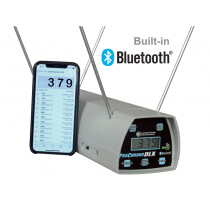
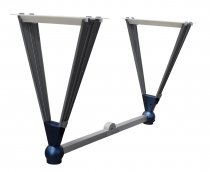
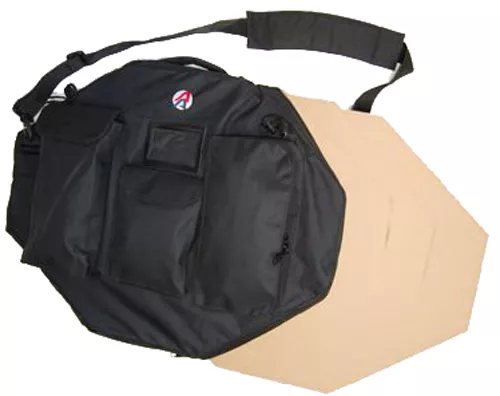
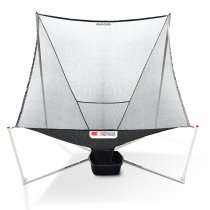
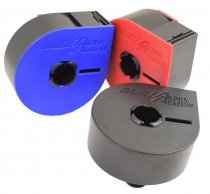
.webp)

